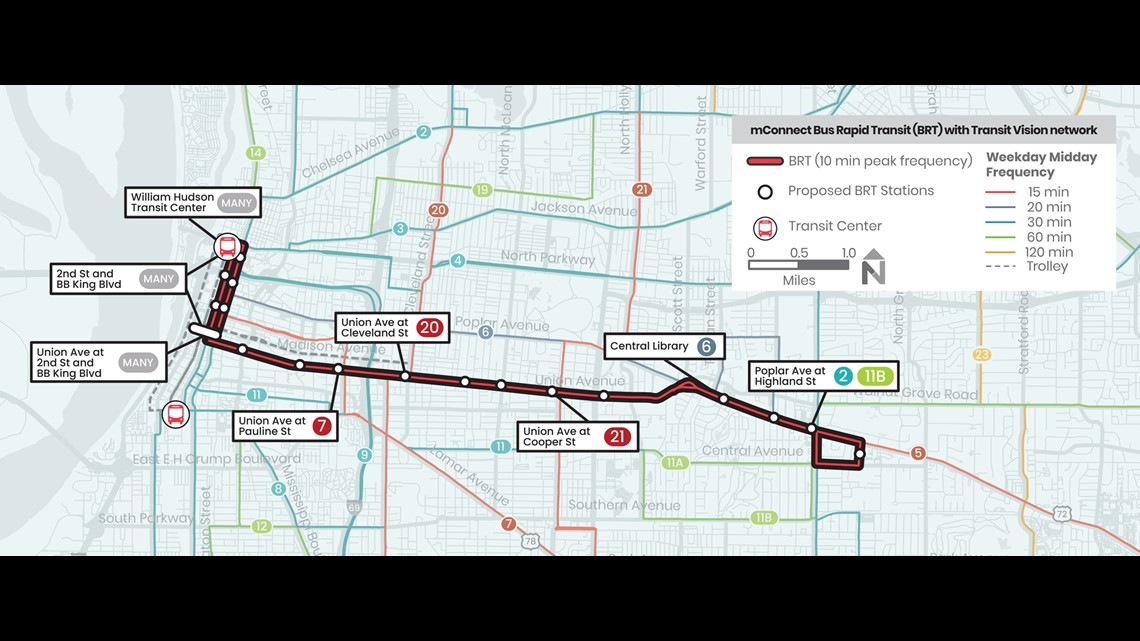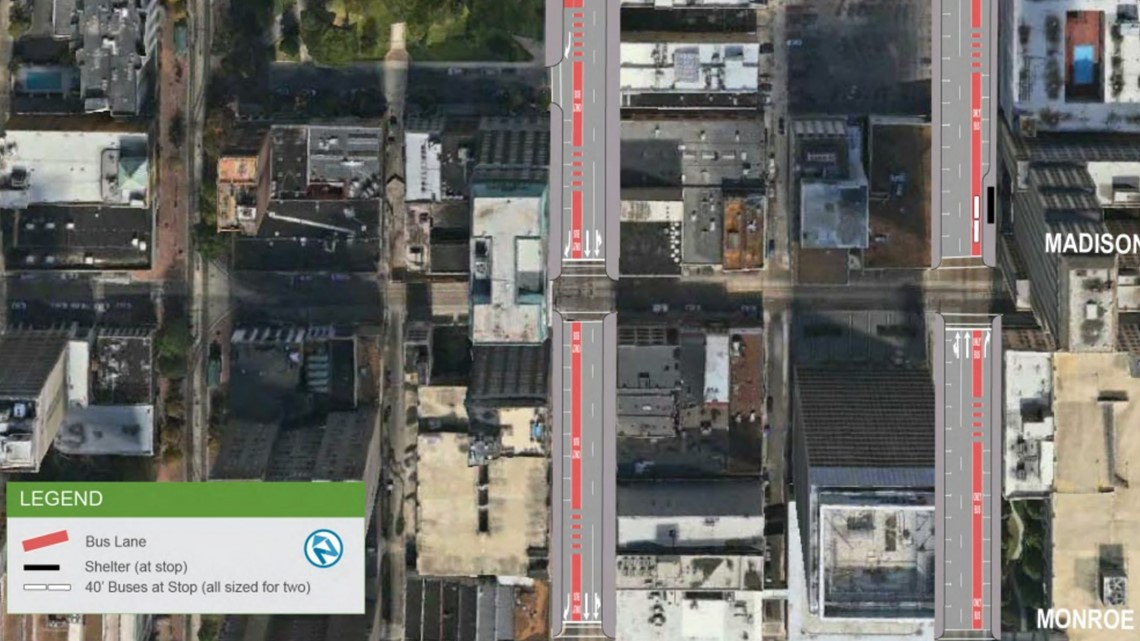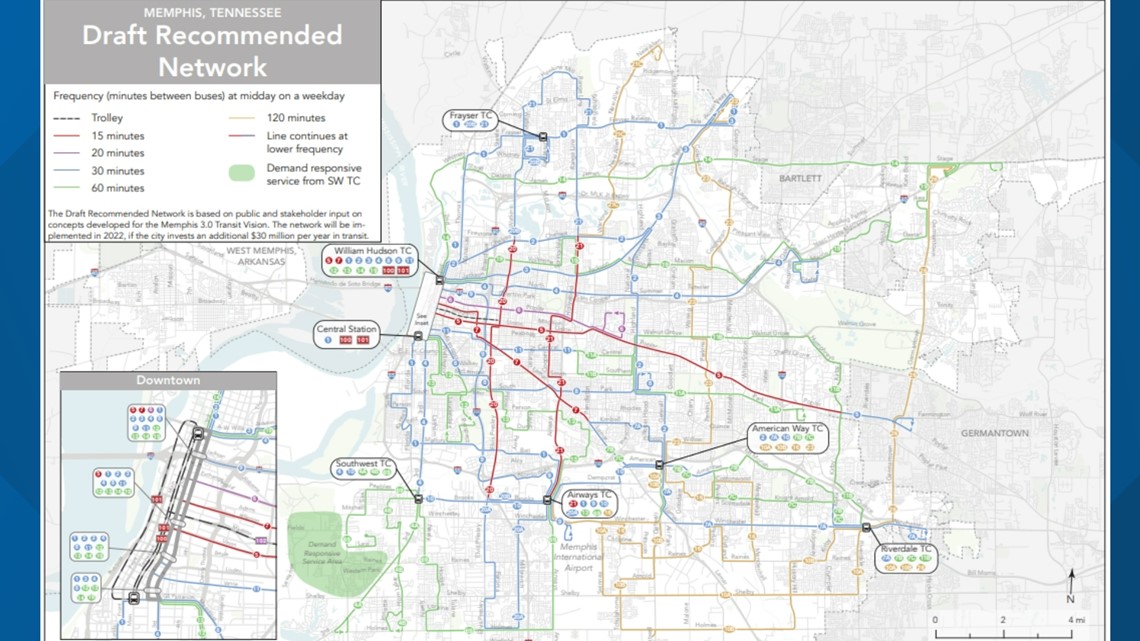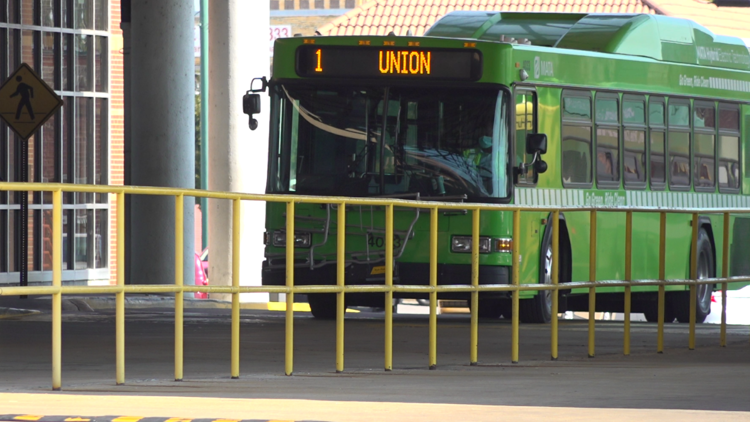MEMPHIS, Tenn. — The U.S. Department of Transportation announced Monday they are recommending $4.45 billion to develop new rail and bus rapid transit projects around the country, and support existing networks.
The Memphis Innovation Corridor bus rapid transit project, first designed by MATA in 2019, is among the new projects with the proposed funding, with $46 million allocated.
The money was first recommended by the Federal Transportation Administration in January.
The funding, matched locally, will enable the $73 million project to begin construction by 2023.
"I couldn’t be happier to have gotten this news," Memphis Mayor Jim Strickland said. "This is a project we have been working towards for a long time that will link downtown, the Memphis Medical District, and the University of Memphis and provide convenient and reliable access to jobs, education, and health services."
MATA calls their project mConnect, and expects it to begin full regular service by 2026.
What would a Bus Rapid Transit system do for commuters?
The bus rapid transit network would see dedicated bus lanes on major Memphis thoroughfares, three new transit centers in Frayser, Southwest Memphis and Riverdale, and increase the frequency of bus stops in all areas of the city.
MATA said on mConnect's website that the bus rapid transit system provides the same benefits as a light rail or subway network, but with half the costs.
The project will create an eight-mile corridor along Poplar Avenue from downtown Memphis to the campus of the University of Memphis. The route will have dedicated bus rapid transit stations, and MATA said the goal with this corridor is to have busses serving each station in 10-minute intervals.


MATA said the built up bus rapid transit network will allow existing resources to flow into underserved areas of the community, namely Frayser, Riverdale and Whitehaven, where new transit centers will be built.
MATA expects the bus rapid transit system, as part of their redesigned network, to improve access to jobs within an hour from anywhere in the city by 39%, which improves to 45% in minority communities and 49% in low-income areas.
In addition, MATA said the accessibility for riders with disabilities and overall rider experience on the busses will improve with the system.
Their goal is to improve the overall experience and safety on their network with infrastructure improvements, as well as introducing articulated, high-capacity busses that are fully electric and environmentally sustainable, such as those used in Seattle's RapidRide bus rapid transit system.
How will the existing bus system improve in the meantime?
MATA said dedicated bus lanes for high-frequency routes in Memphis could come as early as 2023, when construction is expected to begin. These would alleviate the traffic burden on busses, and give them a much better chance to serve their routes on time.


While most existing bus networks serve routes in 60-minute intervals during peak times, drawing past criticism, MATA is looking to drastically reduce that time.


Bus routes will be re-designed to converge on high-frequency stops, allowing riders to easily make a connection in minutes.
MATA said not only will the improved service increase stop frequencies during peak times, but the added capacity will allow them to upgrade weekend and off-peak service as well.
The improvements would bring 80,000 more people and more than 100,000 new jobs within 1/2 mile of frequent bus stops, according to MATA.
Construction of the network was expected to start in June, 2021, but experienced delays due to COVID-19.



